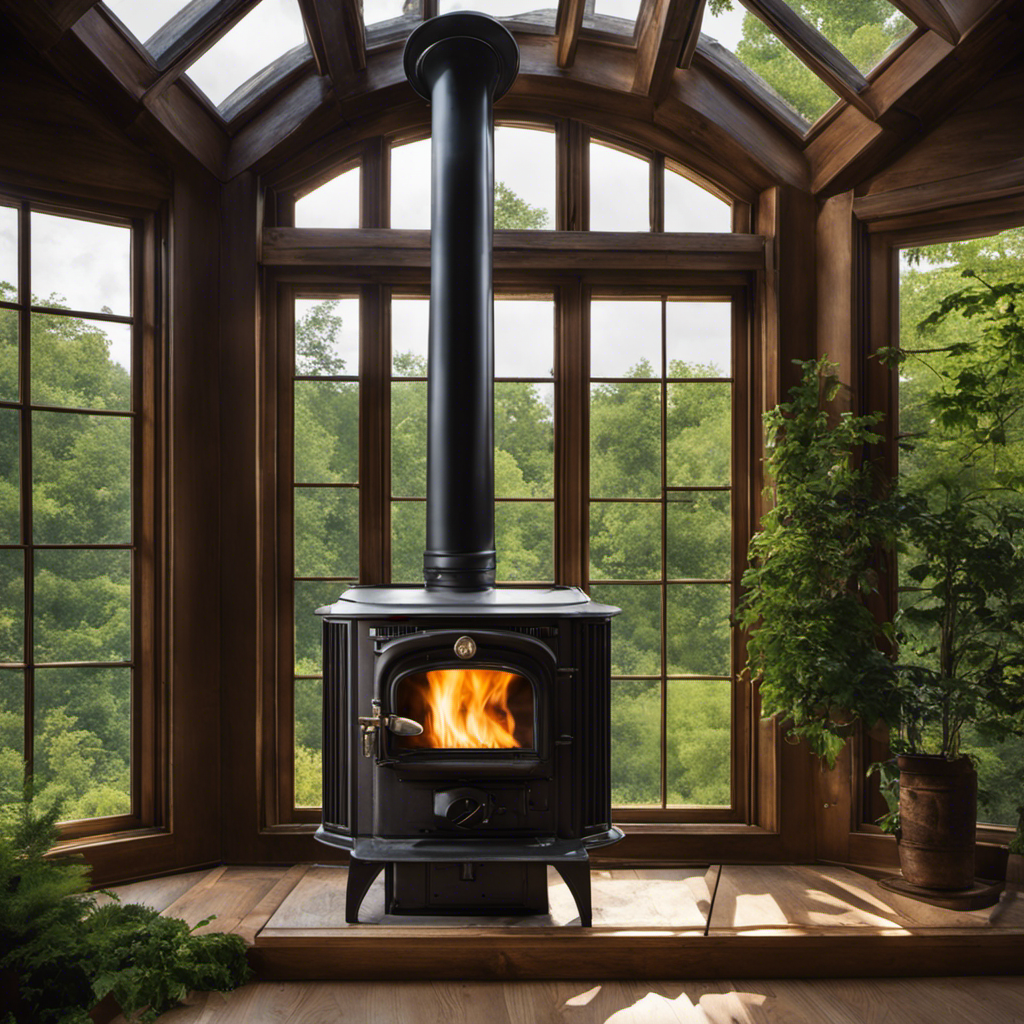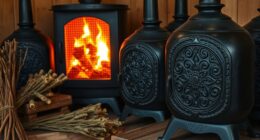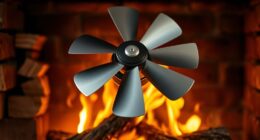As a seasoned enthusiast of wood stoves, I have discovered the secrets to transforming an ordinary wood stove into a powerful heating source.
In this article, I will share with you my expert knowledge and techniques to improve your wood stove’s performance.
From enhancing airflow to increasing heat output, reducing smoke emissions to improving fuel efficiency, and implementing safety measures, I will guide you step by step towards maximizing the potential of your wood stove.
Get ready to experience a roaring fire like never before.
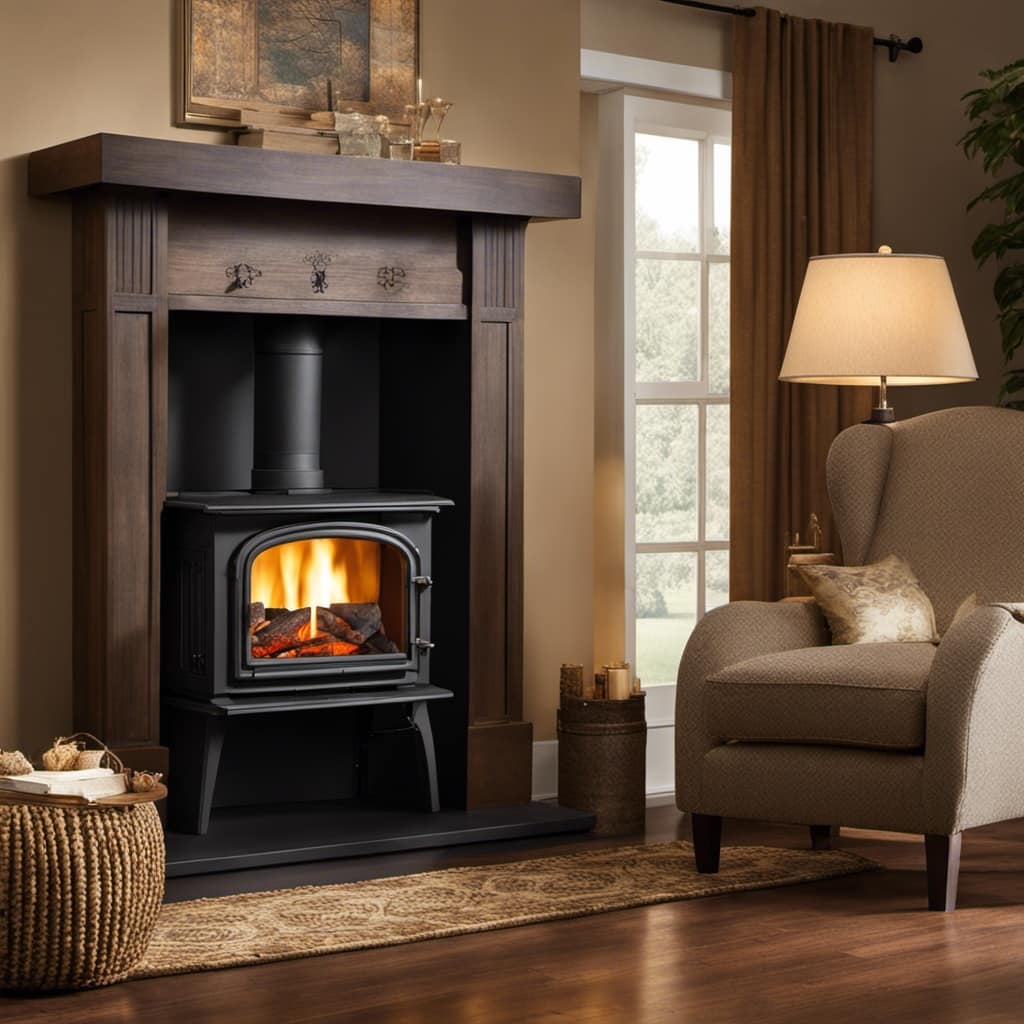
Key Takeaways
- Insulating the chimney to prevent heat loss and improve draft control
- Experimenting with different fuel types to optimize combustion and increase heat output
- Adjusting air intake to control oxygen reaching the fire for complete combustion and reduce smoke emissions
- Regularly inspecting and maintaining the wood stove for safety, including cleaning the stove and chimney regularly and installing a carbon monoxide detector.
Enhancing Airflow
I’m currently working on enhancing airflow in my wood stove by installing a new fan system. One of the key aspects of improving airflow is ensuring that the chimney is properly insulated. This helps to prevent heat loss and allows for better draft control. By insulating the chimney, I can minimize the temperature difference between the inside and outside of the chimney, reducing the chances of air stagnation and improving overall airflow.
Additionally, I’m also considering adding a secondary combustion system to further enhance the efficiency of my wood stove. This system allows for the burning of additional gases and particles, resulting in a cleaner and more efficient combustion process.
Increasing Heat Output
To increase the heat output of my wood stove, I’m experimenting with different fuel types and adjusting the air intake to optimize combustion. This allows me to achieve a higher temperature and better heat circulation throughout my space.
Additionally, I’ve been exploring the use of insulating materials to minimize heat loss and maximize efficiency. These materials help to trap and retain the heat within the stove, ensuring that more of it’s transferred into the room rather than being wasted. Some of the insulating materials I’ve been considering include ceramic fiber blankets, refractory bricks, and stove gasket seals.

Reducing Smoke Emissions
Adjusting the air intake is an effective way of reducing smoke emissions from my wood stove. By adjusting the air intake, I can control the amount of oxygen that reaches the fire. This ensures complete combustion of the wood, resulting in less smoke production.
Using seasoned firewood is another crucial factor in achieving clean burning and minimizing the environmental impact. Seasoned wood has lower moisture content, which leads to more efficient and cleaner burning. Wet or green wood tends to produce more smoke and releases harmful pollutants into the air.
Improving Fuel Efficiency
By optimizing combustion and minimizing waste, I can enhance the fuel efficiency of my wood stove. With years of experience in using wood stoves, I’ve learned the importance of certain factors that can significantly improve the efficiency of the stove.
Here are some key points to consider:
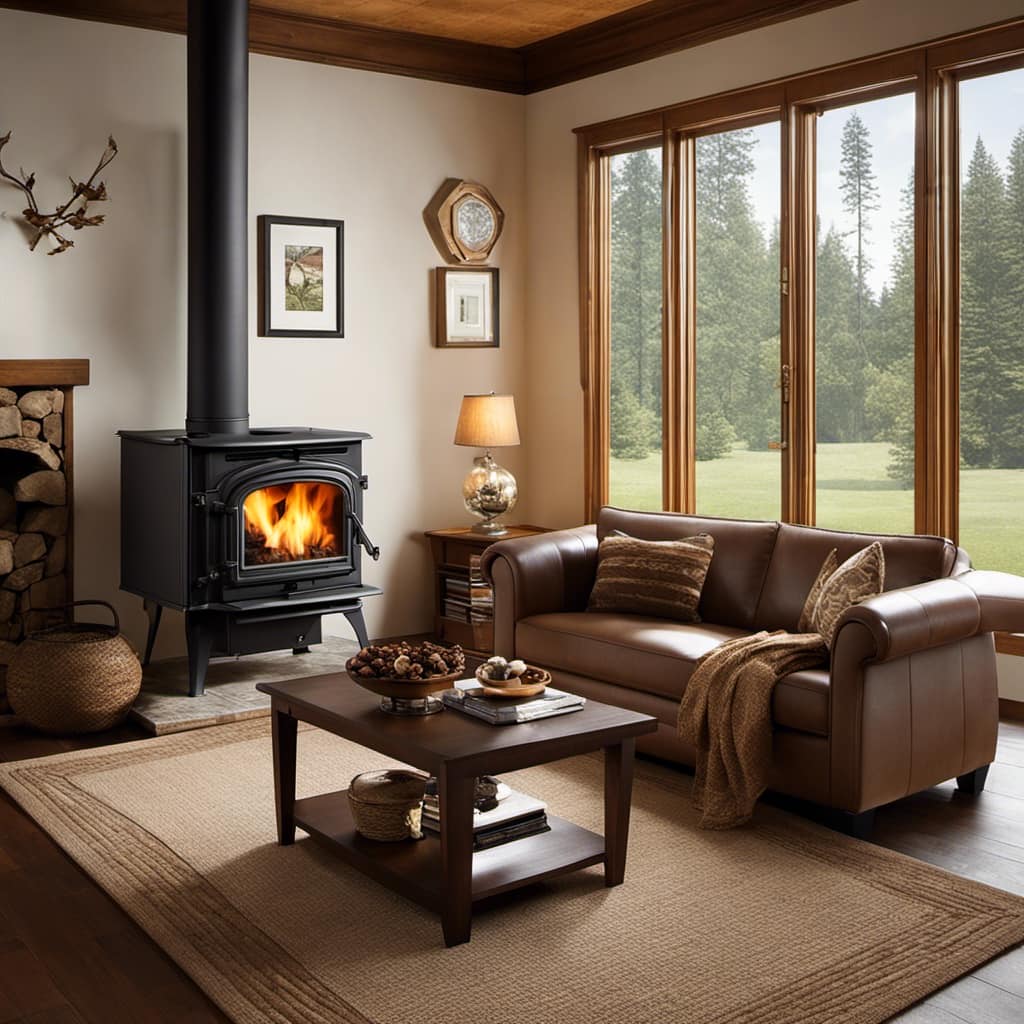
Insulating lining: Installing a high-quality insulating lining inside the stove can help to retain heat and prevent heat loss, improving overall efficiency.
Fuel quality: Using dry and seasoned firewood is crucial for efficient combustion. Moisture content in the wood affects the combustion process and can lead to lower efficiency.
Proper airflow: Ensuring proper airflow into the stove is essential for efficient combustion. This can be achieved by adjusting the air vents and keeping them clean and free from obstructions.
Regular maintenance: Regularly cleaning the stove and its components, such as the chimney and flue, can prevent blockages and improve airflow, resulting in better fuel efficiency.

Efficient burning techniques: Adopting proper burning techniques, such as stacking the wood properly and using smaller-sized logs, can maximize heat output and minimize waste.
Enhancing Safety Measures
I can ensure the safety of my wood stove by regularly inspecting and maintaining it, as well as following proper usage guidelines. As an experienced user, I understand the importance of fire prevention techniques and carbon monoxide detection in keeping my home and family safe. Here are some key measures I take to enhance safety:
| Fire Prevention Techniques | Carbon Monoxide Detection |
|---|---|
| Regularly cleaning the stove and chimney to prevent creosote buildup | Installing a carbon monoxide detector near the wood stove |
| Using dry, well-seasoned firewood to reduce the risk of chimney fires | Ensuring proper ventilation in the room where the wood stove is located |
| Keeping a safe distance between the stove and flammable materials | Knowing the signs of carbon monoxide poisoning and seeking medical help if necessary |
What are some features or upgrades to look for when improving a wood stove?
When buying a quality wood stove, consider features like a secondary combustion system for increased efficiency, an air wash system to keep the glass clean, and a large ash pan for easy cleaning. Look for upgrades like a catalytic converter for cleaner emissions and a built-in blower for better heat distribution.
Frequently Asked Questions
How Often Should I Clean My Wood Stove to Ensure Optimal Airflow?
I clean my wood stove every few weeks to maintain optimal airflow. This regular maintenance is crucial for improving the performance of the stove and ensuring efficient burning of wood.
Can I Use Any Type of Wood in My Wood Stove to Increase Heat Output?
I’ve found that using different wood types in my wood stove can increase heat output. It’s important to consider alternative fuel sources like hardwoods, which burn longer and provide more heat.
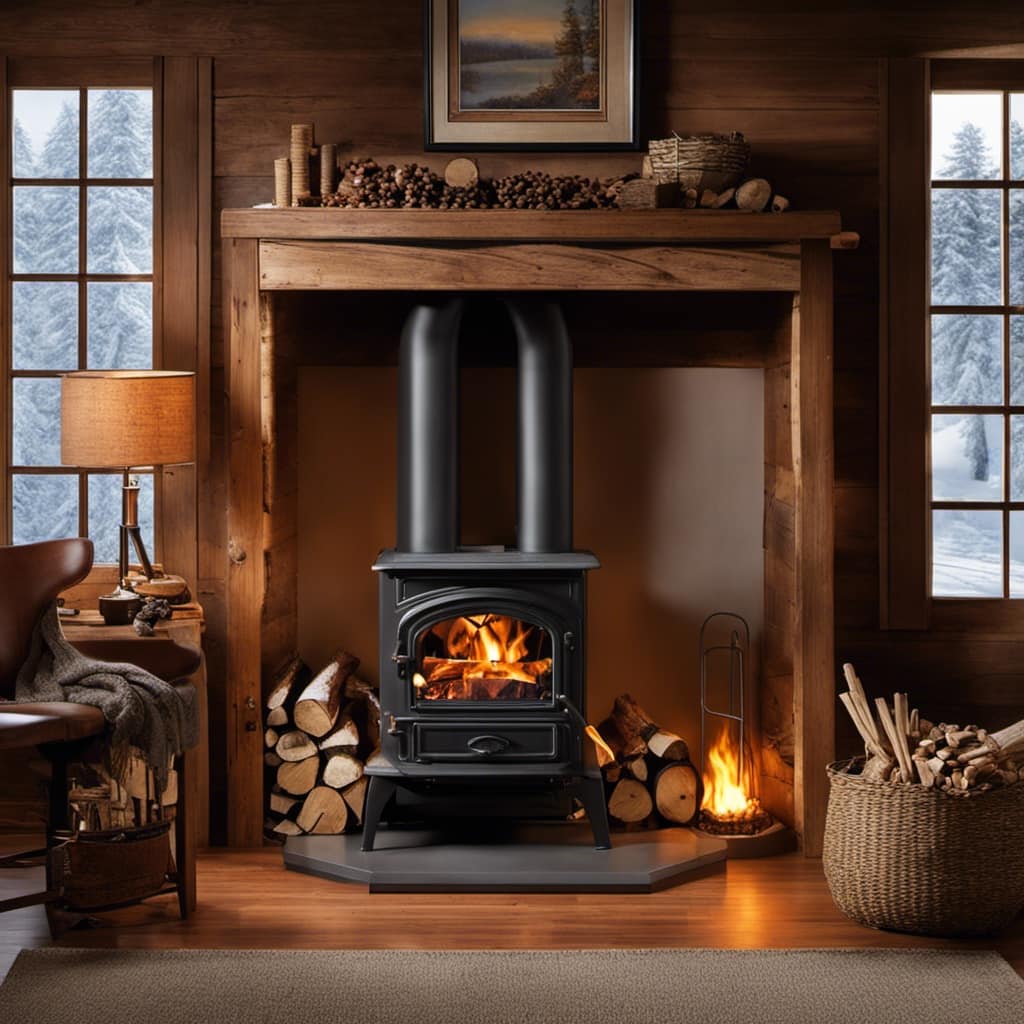
Is There a Specific Technique to Reduce Smoke Emissions When Using a Wood Stove?
Reducing smoke emissions is a critical aspect of improving wood stove efficiency. By implementing proper combustion techniques, ensuring adequate air supply, and using dry and seasoned wood, smoke emissions can be significantly reduced.
Are There Any Specific Fuel Types or Additives That Can Improve Fuel Efficiency in a Wood Stove?
There are specific fuel types and additives that can improve fuel efficiency in a wood stove. By using dry and seasoned hardwoods, along with additives like stove fans, you can maximize the heat output and minimize fuel consumption.
What Safety Measures Should I Take to Prevent Accidents While Operating a Wood Stove?
To prevent accidents when operating a wood stove, I prioritize safety measures. I ensure proper ventilation, keep flammable items away, and use heat-resistant gloves. It’s crucial to have a fire extinguisher nearby and maintain regular maintenance to avoid any mishaps.
Conclusion
In conclusion, by implementing the suggested improvements, your wood stove can become a more efficient and environmentally-friendly heating source.
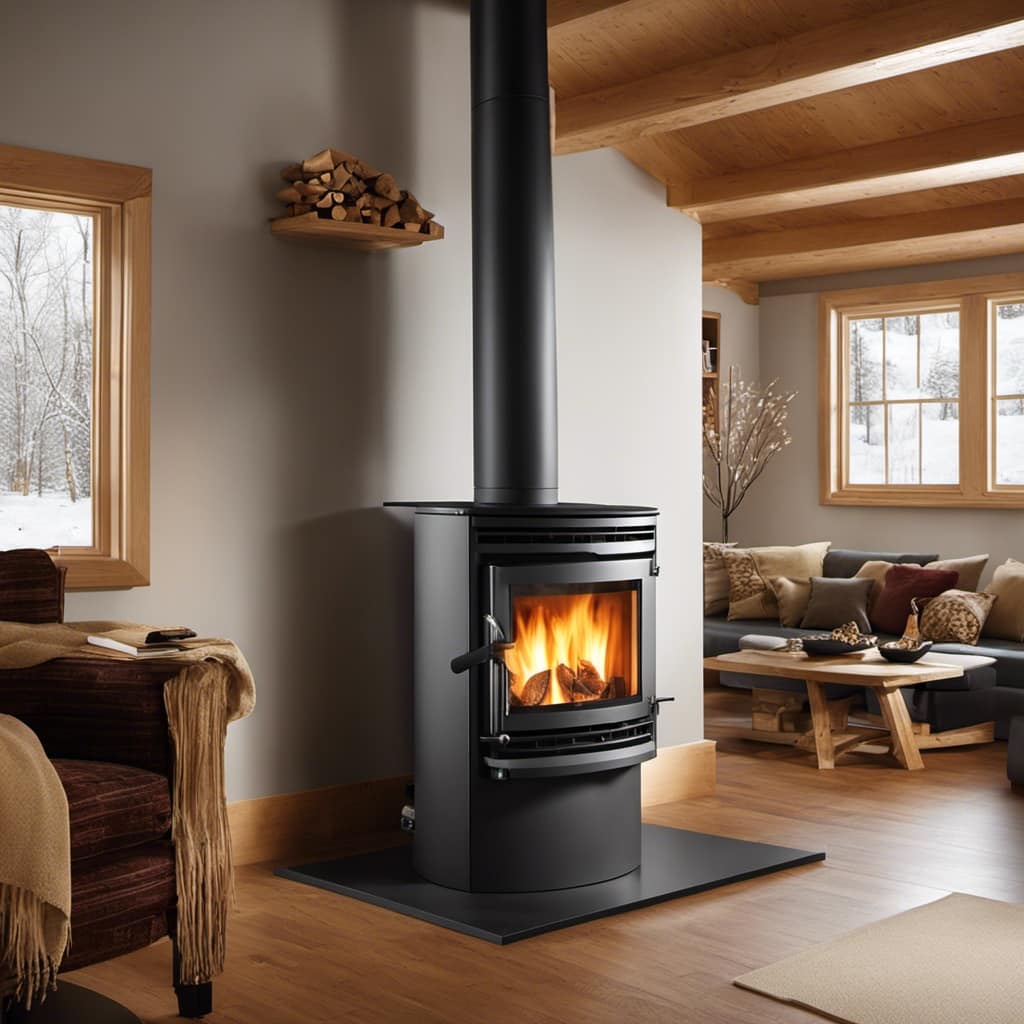
Did you know that improving airflow alone can increase the heat output of your wood stove by up to 20%?
With these enhancements, you can enjoy a warmer and cozier home while also reducing your carbon footprint.
Remember to prioritize safety and consult professional help when making any modifications to your wood stove.
Happy heating!
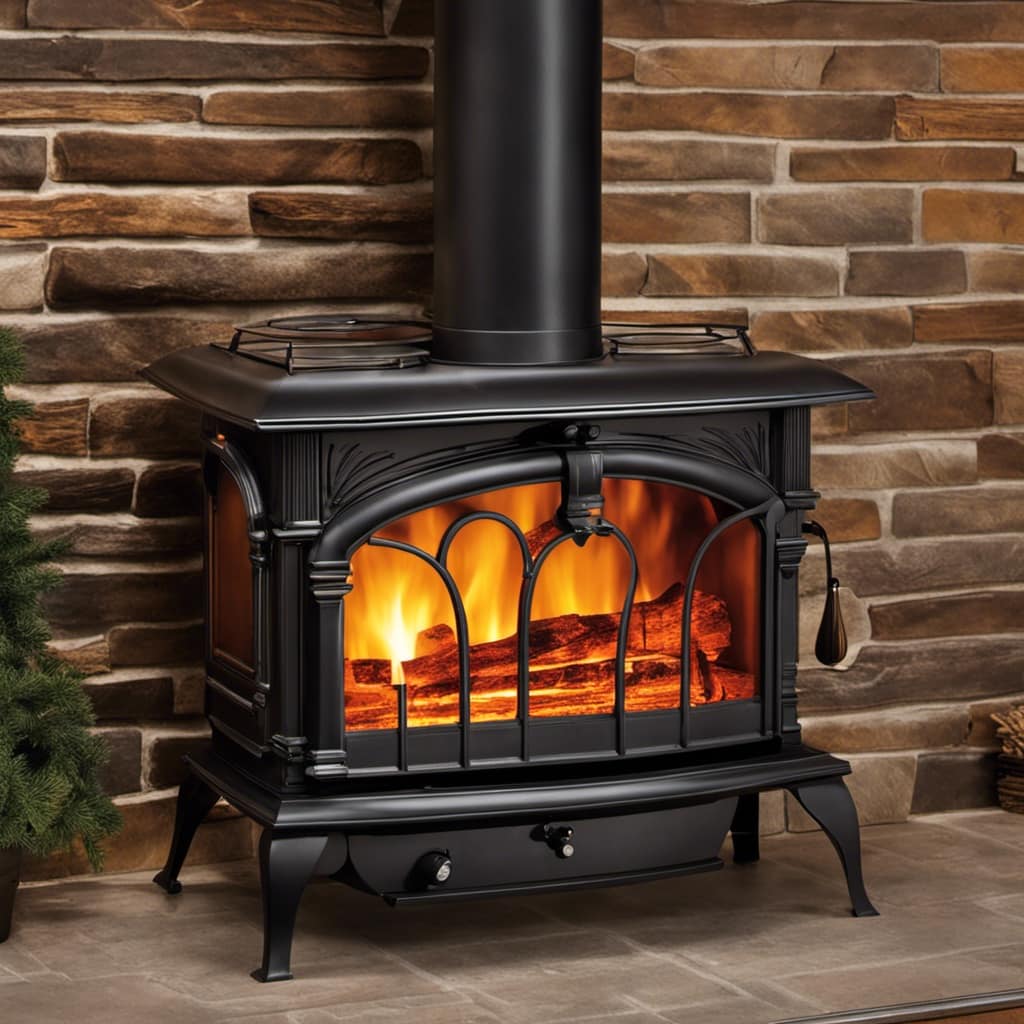
Growing up surrounded by the vast beauty of nature, Sierra was always drawn to the call of the wild. While others sought the comfort of the familiar, she ventured out, embracing the unpredictable and finding stories in the heartbeat of nature.
At the epicenter of every remarkable venture lies a dynamic team—a fusion of diverse talents, visions, and passions. The essence of Best Small Wood Stoves is crafted and refined by such a trio: Sierra, Logan, and Terra. Their collective expertise has transformed the platform into a leading authority on small wood stoves, radiating warmth and knowledge in equal measure.




